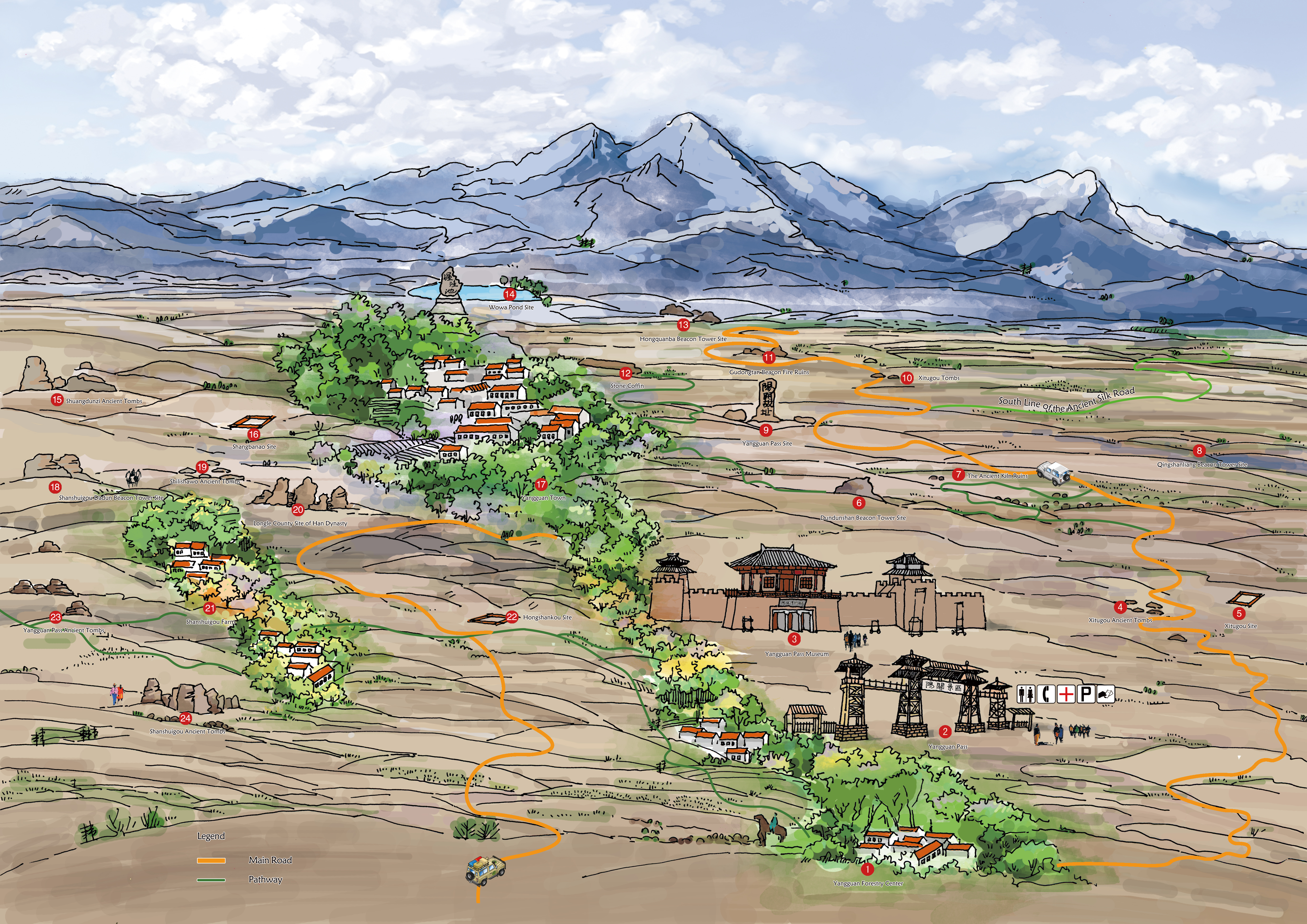Yangguan Pass was built in the 1st century BC during the reign of Emperor Wu of the Western Han Dynasty. Like Yumen Pass, it used to be an important frontier pass and the earliest customs in China's Han and Tang dynasties. The Yangguan Pass is a strategic pass with the river at its back and echoes the Yumen Pass in the north and south. Together with Dunhuang Prefecture, a triangle was formed that could be easy to defend but hard to conquer. Yangguan Pass thus became an important pass for the Han Dynasty to defend against the invasion of nomads in the northwest, and an important gateway on the Silk Road from the Central Plains to the West Regions and Central Asia. There are many cultural relics and ruins such as ancient passes, ancient towns, ancient beacon towers, and ancient roads in the Han and Tang dynasties. Yangguan Pass is one of the important bases for academic research and exchange on Silk Road culture, Dunhuang culture, Two-pass Great Wall culture, and ethnic group culture in frontier regions.

Guide Map of Yangguan Pass
 简体中文
简体中文
